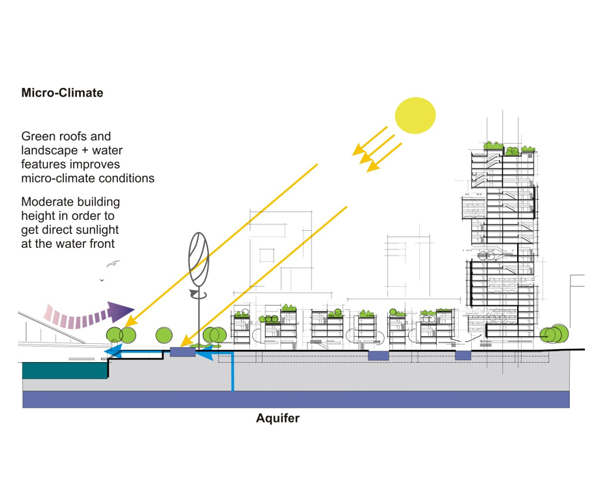
Monthly Archives: February 2008
Stop Flushing Your Drugs – the Fish are Overdosing!!
And going sterile:
NO ONE EVER planned for fish to take birth control pills. But they are. As treated wastewater flows into rivers and streams every day, fish all over the world get a tiny dose of 17α-ethinylestradiol, a synthetic steroidal estrogen that’s used in birth control pills. They also get a little sip of the anticonvulsant carbamazepine, a nip of the antidepressant fluoxetine, and a taste of hundreds of other drugs that we take to make our lives better.
Let’s face it – we are a society obsessed with drugs, pharmaceutical and otherwise. Also, increasingly so, we are a society obsessed with keeping our bodies free of toxins. Conflict of interest much? The fish think so. Male fish inhabiting waters near water treatment plants, for example, are becoming feminized (aka growing eggs in their testes) as a result of our habits.
By far, the most dramatic example of this kind of pharmaceutical pollution has been the effect of estrogenic compounds on fish. In the 1990s, scientists working in the U.K. noted that male fish living downstream from wastewater treatment plants were becoming feminized. They were making proteins associated with egg production in female fish, and they were developing early-stage eggs in their testes. Feminized male fish have now been observed in rivers and streams in the U.S. and Europe.
Recent studies done by John Sumpter, an ecotoxicologist at England’s Brunel University and Karen A. Kidd, a biology professor at the Canadian Rivers Institute, University of New Brunswick, confirm that the level of pharmaceutical drug contamination in the waters is affecting the fish. The drugs are getting there via several paths (see image below) – in our bodily excretions, and through our drains (I know all you ninjas have flushed a little something down your toilets at some time or another). The levels are low – as low as the parts per trillion (ppt) range, but because drugs are specifically formulated to be effective at low levels, even the ppt range can affect the water populations.
FOR THREE SUMMERS, Kidd and her colleagues spiked a lake in Canada’s Experimental Lakes Area with 17α-ethinylestradiol at a concentration of 5 ppt—a concentration that has been measured in municipal wastewaters and in river waters downstream of discharges. During the autumn that followed the first addition of the estrogenic compound, the researchers observed delayed sperm cell development in male fathead minnows—the freshwater equivalent of a canary in a coal mine. A year later, the male fathead minnows were producing eggs and had largely stopped reproducing. The minnow population began to plummet. The decline continued for an additional three years until the fish had all but disappeared from the lake.
And as the circle of life goes, the loss of one species ripples through the food chain:
The fathead minnow wasn’t the only fish to feel the effects of the trace amounts of birth control. The population of lake trout, which feed on smaller fish, fell by about 30%. “The numbers of lake trout dropped not because of direct exposure to the estrogens but because they lost their food supply,” Kidd says.
But Kidd’s story is not all doom and gloom. In 2006, three years after her team stopped adding 17α-ethinylestradiol to the lake, the fathead minnow population rebounded. “So given enough time, once you remove the estrogens from a system, the fish can recover to their original population size,” Kidd notes.
People and animals excrete pharmaceuticals and their metabolites, which then find their way into the environment through a variety of routes—treated wastewater, agricultural runoff, and biosolids and manure that are used as fertilizers. Pharmaceuticals also enter the environment when people dispose of medications by flushing them down the toilet or pouring them down the drain.
We cannot avoid the bodily excretion of drugs that make it through our systems, but we can use other means of disposing of unused drugs. C&EN recommends:
Getting people to stop flushing away their unwanted medication is one easy way to cut down on pharmaceutical pollution. So last year, the Office of National Drug Control Policy (ONDCP) issued new federal guidelines for the proper disposal of prescription drugs. According to the guidelines, unused, unneeded, or expired prescription drugs should be removed from their original containers and thrown in the trash.
To prevent accidental poisonings or potential drug abuse, ONDCP recommends mixing meds with an undesirable substance, such as coffee grounds or kitty litter. The mix should be placed into impermeable, nondescript containers, such as empty cans or sealable plastic bags, before being tossed in the trash.
In some cases, the risk of poisoning or abuse outweighs the potential environmental impact. The Food & Drug Administration recommends that certain controlled substances, such as the painkillers OxyContin and Percocet, are best disposed of down the drain. A full list is available at ONDCP’s website (whitehousedrugpolicy.gov/drugfact/factsht/proper_disposal.html).
Moral of the story: stop flushing your goods. And check C&EN for more details.
Exxon Valdez v Alaskan Fisherman: Still in Legal Purgatory
Nearly two decades after the 1989 Exxon Valdez oil spill in Alaska’s Prince William Sound, the class action law suit representing the fishermen of Prince William Sound has made it to the Supreme Court. The fishermen who lost their livelihoods as a result of the spill will find out if they will be the awarded the $2.5-5 billion they were awarded in the first round of court hearings, or if they will get zero.
In the spring of 1989, the Exxon Valdez ran aground and gushed nearly 11 million gallons of fuel, killing more than 200,000 seabirds as well as otters, harbor seals and other marine life. It shut down the region’s fishing industry.
In 1994, they were awarded $5 billion in punitive damages in U.S. District Court. In a series of appeals, that was cut to $2.5 billion. That verdict could be upheld, or done away with entirely, when the Supreme Court rules sometime later this year.
Exxon, in a press statement, called the oil spill a tragic accident that the corporation deeply regrets. But a spokesman said the corporation already has spent more than $3.5 billion in compensatory and cleanup payments and does not believe that maritime law allows for punitive damages.
Such comments reignite the anger in the 63-year-old Copeland. Back in 1989, he was so frustrated by the slow progress of the cleanup that he built his own oil skimmer made of hoses, flour scoops, five-gallon buckets and a small pump.
That was the start of the “fishermen’s bounty program” that eventually corralled some 40,000 gallons of oil that Exxon purchased.
Here is a pretty moving Sierra Club Chronicles episode (introduced by Darryl Hannah) on the saga [via ExxposeExxon.com], The Day the Water Died:
[googlevideo]http://video.google.com/videoplay?docid=-2200919808132393024&hl=en[/googlevideo]
Behnisch Architekten – Pittsburgh RiverPark

[Image: RiverPark Night Rendering]
Here is a little more information on the Pittsburgh RiverPark by Behnisch Architekten . Menace hit y’all with a post on work they exhibited at the GSD back in September of the year past. So here is the skinny on the RiverPark:
Is: A competition-winning design that incorporates green urban design initiative in the form of various height and size mixed-use buildings.
Now: Pittsburgh is a city with a lack of housing in their core downtown area [cities such as NYC, Toronto, & Boston have a good mix of housing throughout their concrete jungles].

[Image: RiverPark Waterfront Rendering]
Aim: For people to re-examine the ‘American Dream’ – a house in the ‘burbs, 2.5 kids, etc. – for an all-in-one living experience within a pedestrian-friendly, developing area of downtown Pittsburgh.
Proposed: RiverPark – ‘an urban rejuvenation project’ that merges an ensemble of flexible, green mixed-use buildings on six acres. The design incorporates 700 residential units overall, varying the forms and styles of the proposed units. Mixed in with the residences will be retail shops, restaurants, lifestyle facilities [such as a gym], a hotel and convention hall facilities.

[Image: City Rendering 01]
Anyone in design school who has had the pleasure [however excruciating it may have been at the time] to formulate their own ideas on how mixed-use buildings [or areas] should be formed know how difficult it is to a. come up with something that works, b. have it function in terms of space, flow, engagement to the existing city fabric, and c. look good, period. Add green-specific systems into the mix, and one is designing a whole other beast all together. But hakuna matata, my ninjas, cause Behnisch got it all locked in.
Green?: There are a number of systems included in the design of the RiverPark. In terms of energy, there will be a [noiseless!] wind turbine at the water front, photovoltaics integrated into the south facing facade, and an underground water heating/ cooling pump. The micro-climate within the RiverPark was also reimagined with the use of green roofs and landscaping and water features [probably to regulate the super-high humidity in the summer and strong cold fronts in the winter]. The staggered building heights allow for direct sunlight to pass through the buildings and shine uninhibited onto the water front.

[Image: Energy Concept Diagram]

[Image: Micro-Climate Concept Diagram]
The Behnisch RiverPark design can really be used as a stepping-stone for success in most American cities that have not already had major downtown renovations. I have walked around a city like Toronto [where it fronts The Harbor] and the pedestrian interaction and general activities that occur daily along the waterfront really engage a multitude of individuals and their varied interests [note: did anyone know Toronto has an art museum along the waterfront? Get up north and visit, my ninjas! Also get into the city and visit here and here too]. Also, as the time of day changes the activities also change with it. It’s kinda a mix of Providence’s Water-Fire and Baltimore’s Inner Harbor, except i don’t feel like I’m gonna get mugged walking around at night. Canada just produces more docile ninjas, i guess.

[Image: City Rendering 02]
All images & information from the Behnisch website. Peace.
[[Post by DUBS]]
The 2030 Challenge: No Coal
[youtube]http://www.youtube.com/watch?v=-_kCq1s3-dM[/youtube]
Our ninja Mark Anthony, frequent commenter here at MNP, has brought our attention to a competition being held by Architecture 2030 called ‘Face It‘. Here’s a description of the competition, from Arch 2030:
The purpose of the Reverberate Competitions is to create a message that will reverberate throughout your campus and around the country. Entrants who have watched the Face It webcast will be better informed about the importance, meaning and purpose of this message, so we encourage everyone to watch the free, half-hour webcast before creating your Competition entries.
In general, for the graphic design categories, students were asked to create a ‘No Coal’ image on their or another student’s face or body (using washable, non-toxic paints). The graphic design categories are now closed.
For the video categories, you must create a one-minute video, presenting ‘No Coal’ and the 2030 Challenge as a two-fold solution to global warming.
Now, the winners get some $$$ and published in Metropolis – which is pretty cool. Unfortunately, only students can vote – so for all our studious ninjas out there, make your choice [here’s our choice – Mark’s video – if you’d like to vote for the MNP supported video. Being an ever-conscientious ninja, Mark would like to use winnings from the competition to set up a scholarship at his high school for students interested in architecture].
Texas Wind Tycoons
One Man’s Trash is Another Man’s Compost

The Automatic Composter by NatureMill:
…recycles its weight in waste every 10 days, diverting more than two tons of waste from landfills over its lifetime. Using just 10W of power, the odor-free unit is made from recycled and recyclable materials.

[Image: NatureMill Automatic Composter]
So in short[er], the Automatic Composter by NatureMill helps the environment by reducing national waste going into landfills [or New Jersey. I can say that cause i have a lot of family from there]. So for all you green-thumbs out there, go get one [or three, save some money] and help save the rest of us from future-living-earth stink pile.

[Image: NatureMill Automatic Composter 02]
Quoted information from K+BB magazine [December 2007]. Images from the NatureMill website.
Bonus video of Automatic Composter in action:
[youtube]http://www.youtube.com/watch?v=Ch2KKtiFiLM[/youtube]
[[Post by DUBS]]
$49 Carbon Charge
http://www.treehugger.com/files/2008/02/london_drivers.php

Thats $49 A DAY, my ninjas – just to drive your car in London. Hells yes. Possibly as early as this October, British ninjas driving cars emitting 225 grammes of carbon dioxide per kilometer or more will be paying 49 bucks to drive through the city.
Obama for the Planet
Last Wednesday the MNP Group officially proclaimed our endorsement of Democratic Presidential candidate Barack Obama. We here at green.mnp would like to follow suit and endorse Obama as the best candidate to lead the country into a future of sound environmental policy and action. Obama has made it clear that climate change and energy policy will be one of the ‘defining issues’ of his presidential campaign. While he is not perfect on every green issue (no candidate is or was) we are confident that he will seek advice from the right minds and engage people across the country and across the globe in reducing our impact. Grist has great resources for determining how green each candidate is, as well as interviews with each of them. Here are some pertinent excerpts from an interview with Obama:
You’ve consistently emphasized consensus and putting aside partisan battles. Many argue that, when it comes to climate change, the maximum of what’s politically possible falls short of the minimum we need to do to solve the problem. In other words, consensus won’t get us where we need to go. Will you fight the political battles needed to move the consensus on this issue, even if that means aggravating partisan rifts?
I am the cosponsor of the most aggressive climate-change legislation in the Senate, along with Barbara Boxer [D-Calif.] and Bernie Sanders [I-Vt.], which would reduce carbon emissions by 80 percent by 2050. We are going to have to make some big decisions to meet those goals. Consensus doesn’t mean 100 percent consensus — there is undoubtedly going to be resistance from certain parts of the energy sector, and there may be ideological resistance within the Republican Party, and we are going to have to attend to the regional differences in terms of how people get energy. But I believe that we can put together a strong majority to move forward, as long as we are thoughtful about the potential losers in any big piece of energy legislation.
Do you believe that we can achieve political consensus on this goal of 80 percent reductions by 2050?
I think with presidential leadership we can meet this goal, and it will be one of my top priorities. But it is going to require a thoughtful approach that accounts for the possibility that electricity prices will go up, and that low-income people may need to be compensated. We’ll have to deal with the fact that many of our power plants are coal burning, and consider what investments we’re willing to make in coal sequestration. If we make sure that the burdens and benefits of a strong environmental policy are evenly spread across the economy, then people will want to see us take on this problem in an aggressive way.
Some argue that we should only commit to a global climate treaty if China and India do as well. Do you agree? How would you bring China and India to the table?
We shouldn’t look at it as a single tit-for-tat exchange. The U.S. is the world’s largest economy and the largest single source of the world’s greenhouse-gas emissions, so it is our responsibility to take the first step. We cannot expect China and India, with a billion people each, to take the lead on this if we do not — but we can expect them to join us if we demonstrate leadership. If we must take the first step, our second and third steps must be conditioned on meaningful participation by all countries. This is also an enormous opportunity for us to provide our technological expertise to these nations so they can leapfrog to cleaner technologies.
Really though, this is just a shameless excuse to post this adorable and exploitive photo of my niece (who will turn 1 in exactly one month!). I say exploitive because she is a young impressionable mind and should be free decide for herself who she wants to endorse politically. But, I predict that young Skyler will grow up to be a fierce advocate for the planet and its people, and thus will not mind if her cuteness is taken advantage of for the cause:

Suprise, Suprise, Humans Are Impacting the Oceans
So, I was looking for an uploadable version of this BBC ‘fly-over’ video of some work that has been done by researchers on the severity of human impact on the oceans. This map illustrates the areas of impact in the oceans – scary.

Only about 4% of the world’s oceans remain undamaged by human activity, according to the first detailed global map of human impacts on the seas.
However, I got distracted by this series of videos from the 2003 BBC Horizon show The Big Chill. This is basically all old (and at times prophetic) news by now, talking about the infamous ocean conveyor belt and the dire consequences that may ensue if it shuts off. But it gives a good bit of perspective on how little we still know and how much can happen in 5 years. Think about all the craziness that has gone down since 2003 concerning climate change – climatically, politically, intellectually, technologically.
Oh, and watch out for the endearingly geeky clone of a certain red-bearded ninja.
[youtube]http://youtube.com/watch?v=bRdS_T9Hp3g[/youtube]
[youtube]http://youtube.com/watch?v=rkOJm_ic3s0[/youtube]
[youtube]http://youtube.com/watch?v=zh0abDcrXas[/youtube]
[youtube]http://youtube.com/watch?v=kXcCtXTFjzI[/youtube]
[youtube]http://youtube.com/watch?v=LxRxMpk0ZOs[/youtube]




